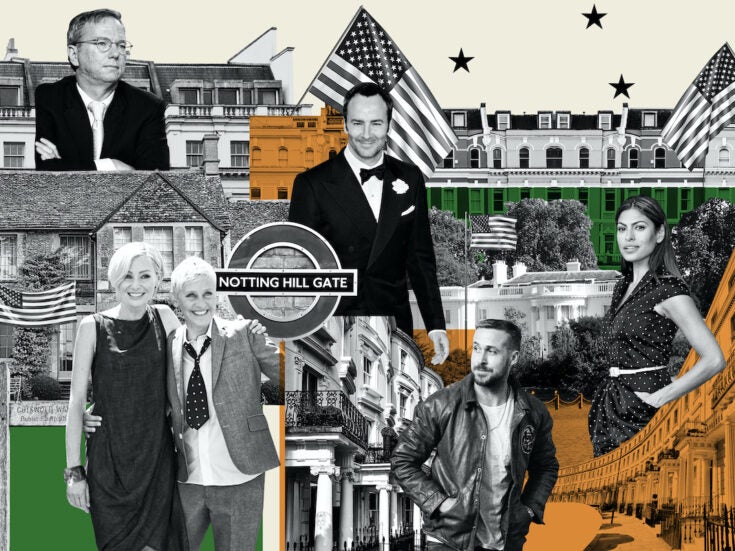
Vic Chhabria, managing director of the London Real Estate Office believes a few key differences will lead to very different outcomes for prime central London
At first glance, it is easy to see why someone looking at Britain’s property market in 2022 would be tempted to draw a comparison with the 1970s.
Both periods have seen property strangled by sudden market shocks. In the 1970s, economic stagflation, triggered in-part by an embargo placed on Western nations by OPEC, strangled the ‘Barber’ house price boom which had seen UK property prices rise 36% in the wake of conservative chancellor Tony Barber’s expansionary economic policies. Today, Russia’s war in Ukraine is having a markedly similar effect. But what about the prime central London property market?
Even in the 70s, the nascent prime central London property market was on a different trajectory to the rest of the UK. London’s position as a financial centre made the city’s grandest properties an attractive proposition. This, combined with a gush of Middle Eastern petrodollars and sickly sterling, saw funds being poured into London property.
Today, although there are similarities to the 70s there are major differences, pointing to a very different outcome. Since financial deregulation in the 1980s London has grown as a global financial powerhouse with the prime central London market becoming increasingly detached from the wider domestic property landscape. Today, it is a truly international market.
Since the great financial crisis (GFC), the international nature of Prime Central London has been driven by increasingly stringent credit requirements, while lower debt-to-equity ratios have greatly reduced credit risk. Meanwhile, interest rates have also remained low with the base rate at 1.25% still far below 5.75% in July 2007, before the GFC, let alone 17% reached in 1979.
Demand has rebounded since the pandemic. Nearly 130 residential properties sold for over £5 million between January and March this year, and demand has continue to grow.
But London’s prime property market is far from overheated compared to wider domestic and international residential property markets. It is rising, steadily, reaching 2.4% in May this year, the highest annual growth since April 2015, but it remains well below its August 2015 peak of 15.3%. The number of annual sales of properties valued over £10 million reached 155 in April, the most since the twelve months to April 2016, according to Knight Frank. This has partly been driven by sustained interest is a weak pound relative to the US dollar and petrodollar-based Middle Eastern currencies, making London’s prime properties the best value in recent years.
The Prime Central London market must not be taken in isolation, however. Since the GFC, residential property prices have risen across most of the developed world, driven by a combination of low interest rates and government incentives. They even continued to rise during the pandemic as people dashed for space and quality of life. But with rising inflation and economic headwinds there will be a period of adjustment with some national markets more at risk of a major correction than others. Particularly those markets which have seen soaring and unsustainable price rises such as New Zealand, Australia and Canada, according to research by Bloomberg Economics.
Most at risk in Europe are the Czech Republic, Hungary and Portugal. Manhattan, which can be considered as a direct rival to prime central London, saw sales of apartments this June plunge by 30% after an initial post pandemic rise in values and an increasing supply of high-end new developments coming on to the market.
In contrast, the prime central London market has continued to attract the global elite this summer, as it has done – steadily – for decades. The Times reported the sale of £20 million five-bedroom mansion close to Harrods this June to a Lebanese buyer. There has been a flurry of sales of properties over the £10 million mark, driven mainly by the pent-up demand caused by the pandemic travel ban being released with the resumption of international travel.
And it it’s not just international buyers. With London’s superb, top class cultural and social life resuming and offices opening strong domestic demand for luxury homes and pied-a-terre properties has been resurrected.
What musn’t be forgotten, is that London is unique. There is very limited opportunity for new development, making the supply of new luxury property extremely tight. Then there is the cachet of owning a grand, elegant mansion, whether Regency, Victorian or Edwardian; properties that can’t be built today. All this is concentrated in a small area in one of the world’s most dynamic and international cities.
The combination of London’s global city status, low value of the pound, stability compared to bubbly competitors and restricted supply of top-end properties means the prime central London market will remain a highly desirable location for high-net-worth property buyers.
Spear’s Magazine presents Spear’s 500 Live on 7 September. Find more information on NSMG.live.






